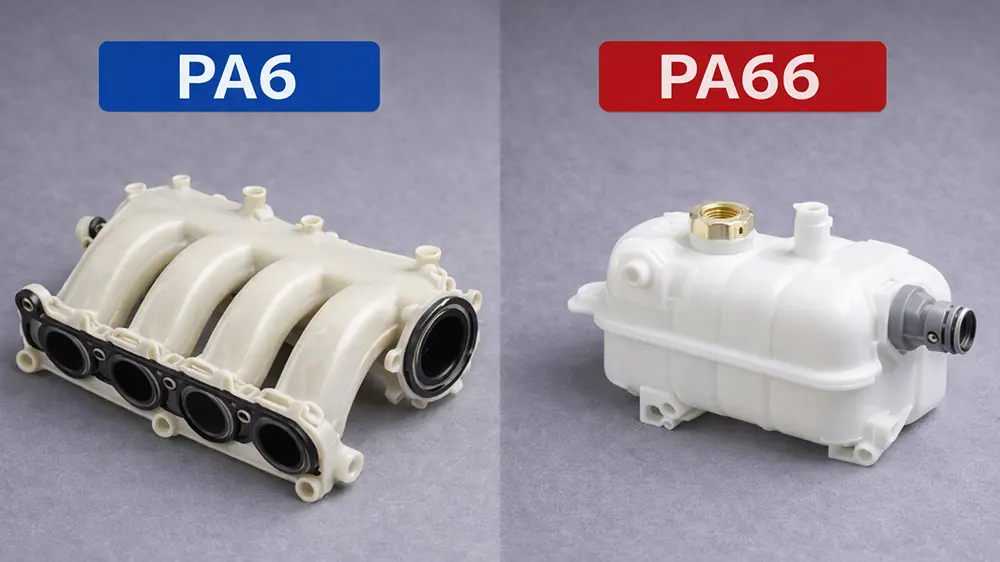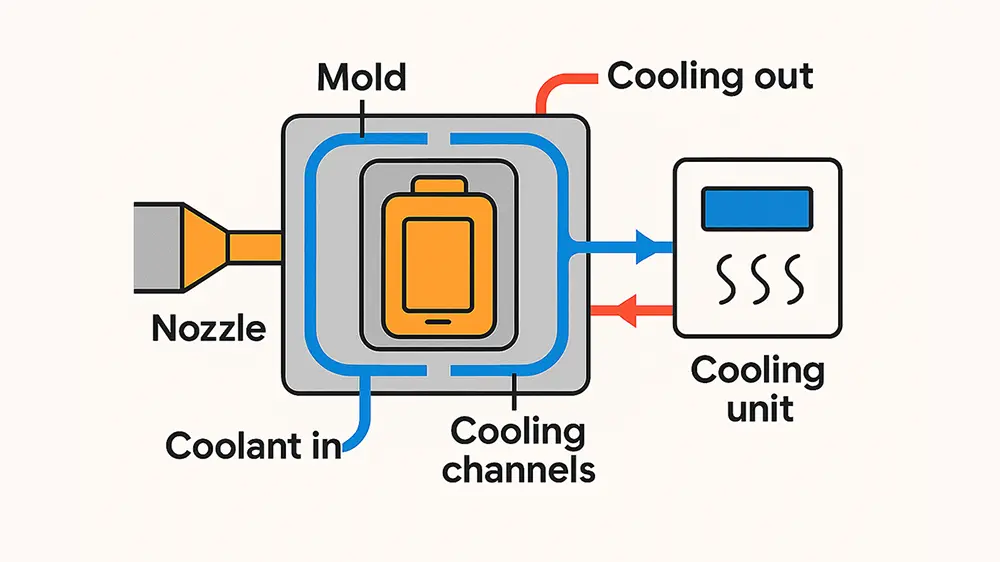In the world of production, plastic is king. They are cheap options for other materials. They are water, heat, and oil resistant. Some even have great absorption rates. In all, they are great for producing items especially, many items in the most cost-effective way.
So, these materials are often joined with a production process which forms them from plastic to a product. And this pairing happens for top results. You pair the best processes with the best materials. To get top results, find the right balance.
So, in recent times, there is a new pairing. Industries now pair AS resin with injection molding. That is a great plastic with a top molding process. So, why is this done? How is it done? What is AS Resin? And what is injection molding tech? These questions and more this article will answer. So, if you are curious about AS resin, read on, find answers, and know more. Welcome to a brief introduction on AS resin injection molding.
What is AS Resin
Also referred to as SAN, AS resin stands for styrene acrylonitrile resin. It is a type of plastic used for water bottles. And also to make kitchen tools. AS resin is a copolymer plastic. That has both acrylonitrile and styrene.
SAN has a high heat temperature. And this makes is proper for products. So, firms use it as an alternative to polystyrene. The heat resistance gives more quality to the product. It is an industry favorite, used in many items.
These products include; water bottles, food containers, other computer items, battery boxes, daily items, and kitchen tools, and other packaging materials.
Features
AS resin has many properties. As previously mentioned it has both acrylonitrile and styrene. Large acrylonitrile helps to increase mechanical parts. That is, the chemical parts improve their mechanical properties as well as the chemical resistance of the item.
But this may add a yellow tint to the transparency making the normal transparent plastic have shades of yellow. But naturally, the AS resin is transparent and brittle. Its usage is similar to polystyrene. Structurally, there are relations to ABS plastic but the AS resin is resistant to boiling water.
This is because the glass transition temperature is beyond 100°C. This increase is a result of its chemical parts.
The AS resin has rubber chains. And these chains create separate phases. And these chains have about 10-20 micrometers in diameter. These are some of the parts of AS resin.
What is Injection Molding Technology
Production is a means of creating products. And injection molding is one of these processes. Injection molding is a technology used for mass production. It is a well-known process in many industries.
The machine is sometimes called IMM which includes the process. In the injection molding process, you heat the material. Then inject it into a mold. The machine clamps and pressures the material into shape. Inside the mold, a lot of events occur such as temperature, clamping, pressure, and molding.
The injection molding technology performs many roles. All to attain the creation of many products. And often the same products.
Injection molding is a process that involves a thermoplastic polymer. This is heated and changed to liquid which is then compressed into a mold and forms the desired product from such material.
How to Injection Mold AS Resin
Now, you may want to know the link between both or to know if you can injection mold AS resin. Well, yes you can mold AS resin using the injection process. Like other materials, the process is similar. But still, the properties of each material determine the details.
So, let us assess AS resin injection molding process. And let us pinpoint the key details in it while becoming familiar with the entire process and things to look out for.
Key Features of AS Resin Injection Molding
These parts to assess are vital. They can ruin or make good the whole process. They are those little details that add quality to items. They are those minor things that ruin processes. And cause damage, excess cost, and waste of effort.
So, assess them carefully as you read. Most of these features depend on the material parts. These include;
· Melting Temperature
This refers to the level at which the material melts. You can say that it is its boiling point. The level at which AS resin is likely to melt. This is vital for materials have to melt before injection or shaping of such material.
The processing temperature of AS resin is around 200-250°C. And its melting heat level is around 200-270°C. Preferably, this is the heat level criteria. The level at which you should heat AS resin.
But at times, the desired products need thick walls. Then, you can meet at a heat level below 200°C. Also, SAN has smaller liquidity when compared to others.
· Injection Pressure
Another aspect is the injection pressure. This is vital for the result of the item. It affects the pressure used on the mold, the compression of the mold, and the final shape of the item.
Also, it is the pressure by which the mold fills. That means it is active during mold filling. Thus, can affect the way materials inject into the mold. You can also refer to it as first-stage pressure.
For top results using AS resin set your injection pressure right. 350-1300bar fast speed injection would do the job. Meaning that AS resin needs fast mold filling. And you can attain this with fast-speed injection pressure. This is your injection pressure choice when using AS resin.
· Mold Temperature
There is another heat level to assess in this process. Apart from the melt temperature, you need to assess the mold temperature. Not only is the melt temperature vital. But that of the mold is also vital.
The heat level in the mold itself affects the product. It shapes the final result. And even the molding of AS resin into items.
If you are using enhanced AS resin, then the mold temperature should not exceed 60°C. This is because the material has added parts. But for normal AS resin with no added chemicals. Let the mold temperature be around 40-80°C depending on the needs of the desired product.
· Cooling System
With mold temperature, you have to balance the cooling system. The heat inside the mold helps to shape the material. But its cooling system affects its shape too.
A well-heated AS resin can spill if not cooled right. Or even shrink if the cooling system is faulty. That, all work done in the mold goes to waste.
The look of the item may even get bleaks. Or the products bend because it’s not properly cooled. So, you’ve to find a balance between heat and cooling. For they are just as vital to the product. Its look, design, shrinking or bend, depends on it.
· Runner and Gate
Last on our list, are the runners and gates. Yes, the injection molding machine has a gate and a runner system too. These are key areas in the molding process. The way your gate shuts and prevents exit without permission, the same way the gate here shuts and helps to prevent heated material from spilling out.
While using AS resin, the regular gate is ideal. So, you do not require any special gate. When injection molding AS resin. But ensure the gate is of a good size. That is, ideal for the mold to avoid gaps, unwanted steaks, and burnt marks.
For the runner, ensure it is ideal for the system. Find one that works for AS resin. Find a balance between the runner and the gate. This would help bring top results.
Conclusion
In summary, injection molding is not stopping soon. And companies are seeking new materials to injection mold. They want cheaper, easy to form materials that give top results with less stress. But have top quality and high resistance.
AS-resin is stronger than other options. It has a great heat resistance and chemical strength. It can withstand some components that stress polystyrene such as hydrocarbons. Also, it has a greater elastic modulus than thermoplastics. It seems to be the full deal. Not forgetting that it is transparent. And easy to form or process making it an industry favorite.
No wonder that firms process it with injection molding. To create stronger, heat and chemical-resistant items in numbers. Many firms use it. The engineering field uses it to make electric sockets and also, kitchen tools, TV bases, and much more.
The auto industry uses it to make dashboards, tractor fuel tanks, headlight cases, and much more. The music field uses it to make instrument cases. Battery boxes, tableware, tools are all part of its items.





